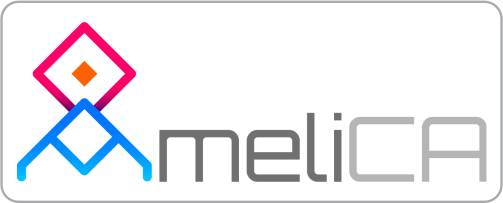Tunnel type solar dryer with self-controlled microclimate for Coffee (Coffea arabica) Honey of high value in cup
DOI:
https://doi.org/10.51252/raa.v2i1.227Keywords:
quality, prototype, drying, sensory, clean cupAbstract
Peru is a world benchmark in the commercialization of specialty and clean cup coffees applying fair trade and has the Honey variety whose organoleptic characteristics make it in high demand. The objective was to design and build a tunnel-type solar dryer with a self-controlled microclimate for high value cup Honey coffees in the province of Moyobamba. For this, we evaluated different designs that incorporate electronic elements with air heating capacity using solar energy and moisture extractors with metal structures for automatic removal every 20 minutes in which we made drying experiments at different temperature and time with grains of Honey coffee. We built a dryer prototype in a geometric vault shape as a surface constructive element; with trays for drying the coffee at maximum temperatures of 35 °C with removal of the bean every 20 minutes in whose facilities has been possible to obtain Honey coffee beans with humidity between 12 to 14% whose samples after being processed obtained an average of 82 points in cup. The device has served its purpose of drying Honey coffee in aseptic, automatic and controlled conditions to obtain Honey coffee with clean cup quality.
Downloads
References
Adonis, M., & Khan, M. T. E. (2004). Combined convective and infrared drying model for food applications. 2004 IEEE Africon. 7th Africon Conference in Africa, 2, 1049-1052. https://doi.org/10.1109/AFRICON.2004.1406850
Alibayan, J. P. I., Bobadilla, I. R. C., Carnicer, M. K. V, Pascua, R. T., Teodosio, J. G., Arago, N. M., Tolentino, L. K. S., Fernandez, E. O., & Valenzuela, I. C. (2019). Green Coffee Bean Sorter and Corrector based on Moisture Content using Capacitive Method. 2019 IEEE 11th International Conference on Humanoid, Nanotechnology, Information Technology, Communication and Control, Environment, and Management, 1–4. https://doi.org/10.1109/HNICEM48295.2019.9073477
Arias Escobar, J. P., Zartha Sossa, J. W., Hernández Zarta, R., & Gómez Garcés, J. (2017). Vigilancia tecnológica y análisis del ciclo de vida de la tecnología: Aplicación en productos generados a partir del café. Revista Electrónica Gestión de Las Personas y Tecnologías, 10(29), 78–94. https://www.revistas.usach.cl/ojs/index.php/revistagpt/article/view/2961
Barrera, Ó., Gutiérrez, N., & Orozco-Blanco, D. (2019). Caracterización y diferenciación de cafés, a partir de espectroscopía infrarroja. Revista U.D.C.A Actualidad & Divulgación Científica, 22. https://doi.org/10.31910/rudca.v22.n1.2019.1158
Bolaños, P. A., Céspedes U, S., & Cuéllar, J. C. (2018). Prototype of a wireless sensor network for monitoring the coffee drying process. IV School of Systems and Networks. 2178, 61–63. http://ceur-ws.org/Vol-2178/SSN2018_paper_19.pdf
Borém, F. M., Ribeiro, F. C., Figueiredo, L. P., Giomo, G. S., Fortunato, V. A., & Isquierdo, E. P. (2013). Evaluation of the sensory and color quality of coffee beans stored in hermetic packaging. Journal of Stored Products Research, 52, 1–6. https://doi.org/10.1016/j.jspr.2012.08.004
Chunshan, L., Siyu, C., Wenfu, W., Rui, W., & Hao, Z. (2016). Experimental Study on Heat Transfer Effect of Far Infrared Convection Combined Drying. 2016 International Conference on Intelligent Transportation, Big Data & Smart City (ICITBS), 505–508. https://doi.org/10.1109/ICITBS.2016.38
da Costa, F. O., Alvarenga, T. F., de Mesquita, T. V. C., & Petri Júnior, I. (2021). Hybrid drying of pulped arabica coffee cherry beans (Coffea arabica L. cv. Catuai) using a hexagonal microwave dryer designed by numerical simulations. Journal of Food Process Engineering, 44(5). https://doi.org/10.1111/jfpe.13666
Díaz Vargas, C., & Carmen Willems, M. (2017). Línea base del sector café en el Perú. Programa de las Naciones Unidas para el Desarrollo – PNUD.
Estevez, C. L., Bhat, M. G., & Bray, D. B. (2018). Commodity chains, institutions, and domestic policies of organic and fair trade coffee in Bolivia. Agroecology and Sustainable Food Systems, 42(3), 299–327. https://doi.org/10.1080/21683565.2017.1359737
Guevara-Sánchez, M., Bernales, C., Saavedra-Ramírez, J., & Owaki-López, J. (2019). Effect of altitude on coffee (Coffea arabica L.) quality: comparison between mechanical and traditional drying. Scientia Agropecuaria, 10(4), 505–510. https://doi.org/10.17268/sci.agropecu.2019.04.07
International Coffee Organization, I. (2021). Historical Data on the Global Coffee Trade. International Coffee Organization. https://www.ico.org/new_historical.asp
Kaveh, M., Abbaspour-Gilandeh, Y., Fatemi, H., & Chen, G. (2021). Impact of different drying methods on the drying time, energy, and quality of green peas. Journal of Food Processing and Preservation. https://doi.org/10.1111/jfpp.15503
Larasati, D. A., Kalandro, G. D., Fibriani, I., Hadi, W., Herdiyanto, D. W., & Sarwono, C. S. (2018). Optimization of Coffee Bean Drying Using Hybrid Solar Systems and Wi-Fi Data Communication. 2018 International Conference on Electrical Engineering and Computer Science (ICECOS), 29–32. https://doi.org/10.1109/ICECOS.2018.8605196
Márquez Romero, F., Julca Otiniano, A., Canto Saenz, M., Soplín Villacorta, H., & Vargas Winstanley, S. (2016). Environmental sustainability in coffee farms after an organic certification process at la convencion (Cusco, Perú). Ecología Aplicada, 15(2), 125–132. http://dx.doi.org/10.21704/rea.v15i2.752
Prada, Á., Vela, C. P., Bardález, G., & Saavedra, J. (2019). Effectiveness of a coffee drying process using solar dryers with a continuous air flow system powered by photovoltaic energy, in the San Martín region, Peru . Informacion Tecnologica, 30(6), 85–92. https://doi.org/10.4067/S0718-07642019000600085
Rodriguez, Y. F. B., Guzman, N. G., & Hernandez, J. G. (2020). Effect of the postharvest processing method on the biochemical composition and sensory analysis of arabica coffee. Engenharia Agricola, 40(2), 177–183. https://doi.org/10.1590/1809-4430-ENG.AGRIC.V40N2P177-183/2020
Specialty Coffee Association. (2003). Protocols & Best Practices. Specialty Coffee Association. https://sca.coffee/research/protocols-best-practices
Sotelo-Valer, F., Huamán-Sayán, L., & Mamani-Arroyo, E. (2020). Design and Implementation of an Automatic Coffee Dryer. 69–73. https://doi.org/10.1145/3429536.3429548
Villegas-Santiago, J., Gómez-Navarro, F., Domínguez-Niño, A., García-Alvarado, M. A., Salgado-Cervantes, M. A., & Luna-Solano, G. (2020). Effect of spray-drying conditions on moisture content and particle size of coffee extract in a prototype dryer . Revista Mexicana de Ingeniera Quimica, 19(2), 767–781. https://doi.org/10.24275/rmiq/Proc767
Zuluaga-Bedoya, C., & Gómez, L. M. (2015). Dynamic modeling of coffee beans dryer. 2015 IEEE 2nd Colombian Conference on Automatic Control (CCAC), 1–6. https://doi.org/10.1109/CCAC.2015.7345214
Published
How to Cite
Issue
Section
License
Copyright (c) 2022 Jhon Dávila-Guamuro, Jossy Llanos-Pérez, Lenin Cabanillas-Pardo

This work is licensed under a Creative Commons Attribution 4.0 International License.
The authors retain their rights:
a. The authors retain their trademark and patent rights, as well as any process or procedure described in the article.
b. The authors retain the right to share, copy, distribute, execute and publicly communicate the article published in the Revista Agrotecnológica Amazónica (RAA) (for example, place it in an institutional repository or publish it in a book), with an acknowledgment of its initial publication in the RAA.
c. Authors retain the right to make a subsequent publication of their work, to use the article or any part of it (for example: a compilation of their works, notes for conferences, thesis, or for a book), provided that they indicate the source of publication (authors of the work, journal, volume, number and date).












